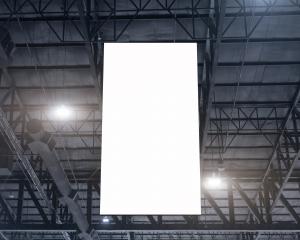
Custom Signage for Events: Strategies for High-Impact Design and Brand Visibility
Darren Gaunt, owner of LA Sign Factory in Covington, Louisiana, emphasizes the importance of intentional design in maximizing the effectiveness of event signage.
“A well-designed sign captures attention, communicates a message quickly, and enhances recognition. It must function in crowded, high-traffic environments where clarity and visual hierarchy make all the difference,” said Gaunt.
Purpose-Driven Signage for Event Success
Event signage serves multiple functions, including brand promotion, directional guidance, schedule presentation, and product identification. Effective signs are built with a clear objective, whether that is attracting attendees to a booth, guiding them to an entrance, or delivering a concise message.
Strategic placement, thoughtful content, and visual coherence with event themes or brand guidelines are key components. Overloaded designs or vague messaging reduce the impact of signage, especially in fast-paced environments.
Key Elements of Standout Event Signs
Designing effective signage requires a focus on layout, typography, color, and material selection. Fonts must be legible from appropriate distances, and messaging should be concise enough to be understood at a glance. Color contrast between background and text improves readability and draws attention.
Incorporating logos, taglines, and brand colors ensures consistency with broader marketing efforts. Signs that align with existing brand identity reinforce familiarity and trust. Strategic use of imagery or negative space can improve visual flow and reduce cognitive overload.
The physical size and format of the sign should match its function and location. Larger signs are appropriate for high-traffic entrances or overhead displays, while smaller tabletop or retractable banner signs work well in booth or reception areas.
Choosing the Right Sign Types for Events
Different events call for different signage formats. Popular choices include:
Retractable banners: Lightweight, portable, and easy to deploy for trade show booths or stage backdrops
Foam board and PVC signs: Ideal for directional signage, welcome boards, or sponsor recognition displays
Backlit signs: Effective in dimly lit environments or for drawing attention to key areas
Vinyl banners: Suitable for outdoor events or large-scale displays with variable weather conditions
Tabletop signs and tent cards: Useful for informational messaging or tabletop branding
Durability, reusability, and installation requirements should guide material choices. For multi-day events, weatherproofing and transportability become critical factors.
Wayfinding and Functional Signage
Beyond branding, signage plays a functional role in managing event flow. Clear directional signs reduce confusion and improve the attendee experience. These signs may include entry and exit points, restrooms, breakout rooms, or sponsor exhibit locations.
Maps, schedules, and QR-code-enabled displays allow for efficient communication without overwhelming printed materials. When integrated properly, functional signage enhances efficiency while remaining on-brand.
Trade Show Signage: First Impressions and Engagement
Trade shows demand signage that not only attracts foot traffic but also supports booth staff in engaging visitors. Messaging should highlight key offerings, promotions, or value propositions within a few seconds of reading.
Signage located at eye-level and above helps attendees identify booths from a distance. A layered signage strategy that includes hanging signs, table graphics, and vertical banners ensures visibility from multiple angles.
Interactive signage elements, such as scannable QR codes or embedded screens, can also encourage digital engagement and content sharing, while freeing up physical space.
Localized Design Considerations
Regional factors such as event venue restrictions, climate, and audience demographics should inform signage design. Outdoor events in humid or windy conditions require materials resistant to moisture and reinforced mounting systems. Indoor venues may impose height or lighting limitations that affect how signs are displayed.
Understanding the venue’s flow and audience behavior patterns improves placement decisions. Signage must be designed to withstand the expected environment while maintaining visual integrity.
Production Timeline and Logistics
Event signage projects benefit from early planning and coordination. Production timelines vary depending on material type, quantity, and complexity. Factoring in proofing, approvals, and revisions ensures accuracy before printing begins.
Transport, setup, and breakdown logistics should also be considered during the design phase. Modular or collapsible formats can reduce handling difficulty and storage space. Protective cases or sleeves preserve sign condition during transit.
Post-Event Reuse and Repurposing
Reusable signage is an efficient choice for brands participating in multiple events. Neutral themes, timeless graphics, and removable or updatable panels allow signs to remain functional across changing campaigns. Sustainable design practices such as recyclable substrates or digital displays may also align with corporate environmental goals.
Storage recommendations include flat stacking, protective wrapping, and climate-controlled environments to prevent fading or warping.
Custom signage remains one of the most visible and cost-effective tools for enhancing brand recognition and improving event engagement. Through careful planning, design execution, and material selection, event signage serves not only as decoration but as an active component in delivering strategic messages and guiding attendee experience.
Morgan Thomas
Rhino Digital, LLC
+1 504-875-5036
email us here
Visit us on social media:
Facebook
Distribution channels: Building & Construction Industry, Culture, Society & Lifestyle, Media, Advertising & PR, Real Estate & Property Management
Legal Disclaimer:
EIN Presswire provides this news content "as is" without warranty of any kind. We do not accept any responsibility or liability for the accuracy, content, images, videos, licenses, completeness, legality, or reliability of the information contained in this article. If you have any complaints or copyright issues related to this article, kindly contact the author above.
Submit your press release

